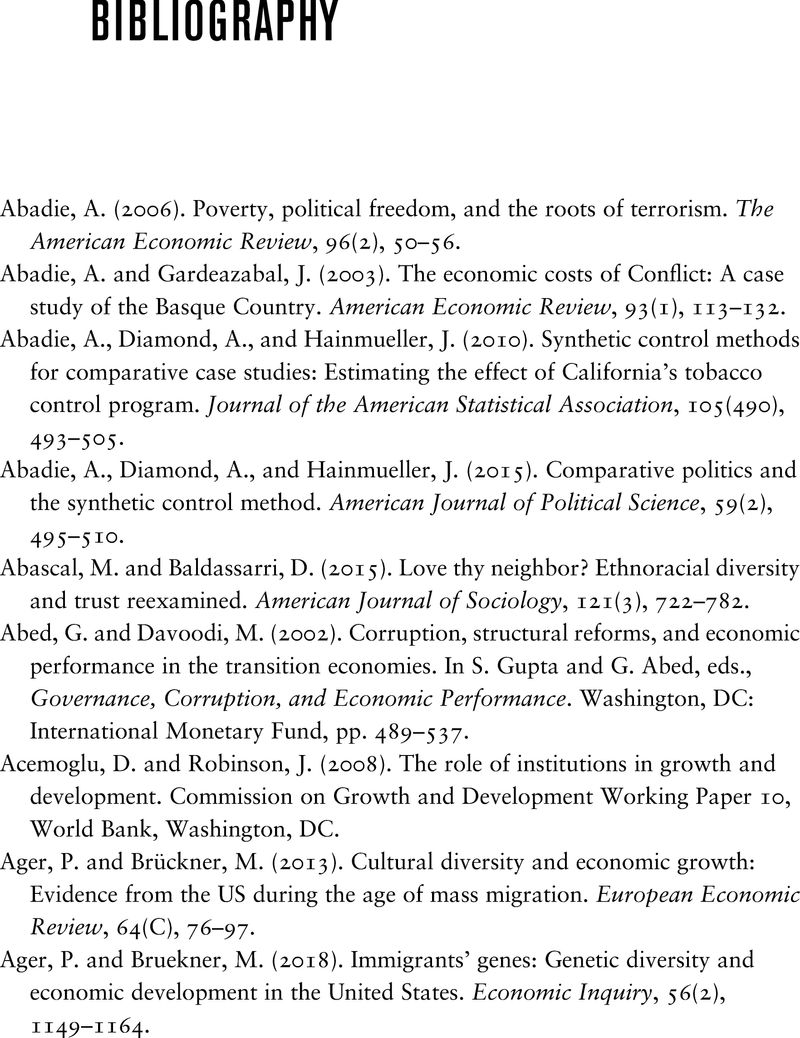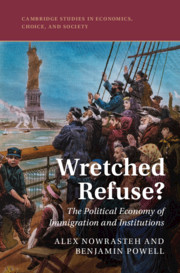Book contents
- Wretched Refuse?
- Cambridge Studies in Economics, Choice, and Society
- Wretched Refuse?
- Copyright page
- Contents
- Tables
- Figures
- Acknowledgments
- 1 Introduction
- Part I State of the Debate
- Part II Cross-country Evidence
- Part III Case Studies in Mass Immigration
- Part IV Assessing the New Economic Case for Immigration Restrictions
- Bibliography
- Index
- References
Bibliography
Published online by Cambridge University Press: 10 December 2020
- Wretched Refuse?
- Cambridge Studies in Economics, Choice, and Society
- Wretched Refuse?
- Copyright page
- Contents
- Tables
- Figures
- Acknowledgments
- 1 Introduction
- Part I State of the Debate
- Part II Cross-country Evidence
- Part III Case Studies in Mass Immigration
- Part IV Assessing the New Economic Case for Immigration Restrictions
- Bibliography
- Index
- References
Summary

- Type
- Chapter
- Information
- Wretched Refuse?The Political Economy of Immigration and Institutions, pp. 285 - 313Publisher: Cambridge University PressPrint publication year: 2020



